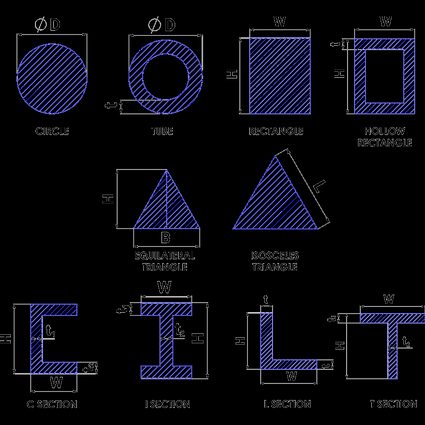how to find cross sectional area
A cross-section is defined as the common region obtained from the intersection of a plane with a 3D object. For instance, consider a long circular tube cut (intersect) with a plane. You'll see a couple of concentric circles. The concentric circles are the cross-section of a tube. Similarly, the beams — L, I, C, and T — are named based on the cross-section shape.

In order to calculate the area of a cross-section, you need to look at them as basic shapes. For instance, a tube is a concentric circle. Therefore, for a tube with inner and outer diameter (d and D) having thickness t, the area of cross-section can be written as:
AC = π * (D2 - d2) / 4 We also know that the inner diameter d is related to thickness t and outer diameter D as:
d = D - 2 * t Therefore, the area of cross-section becomes:
AC = π * (D2 - (D - 2 * t)2) / 4 Similarly, the area of cross-section for all other shapes having width W, height H, and thicknesses t1 and t2 are given in the table below.

| | |
|---|---|
| | |
| | |
| | |
| | |
| | |
| | |
| | |
| | |
| | |
| | |
how to find cross sectional area
Source: https://www.omnicalculator.com/math/cross-sectional-area
Posted by: hyltontiese1993.blogspot.com

0 Response to "how to find cross sectional area"
Post a Comment